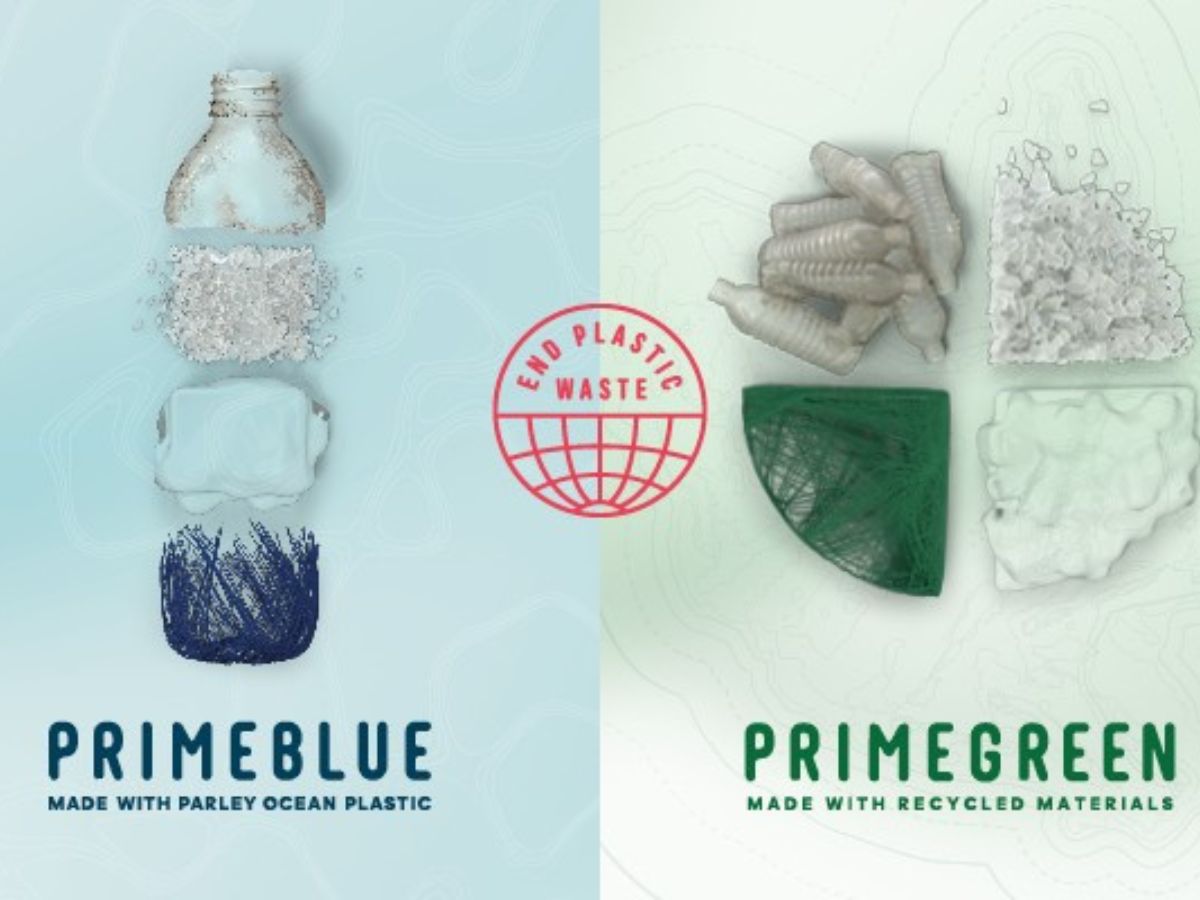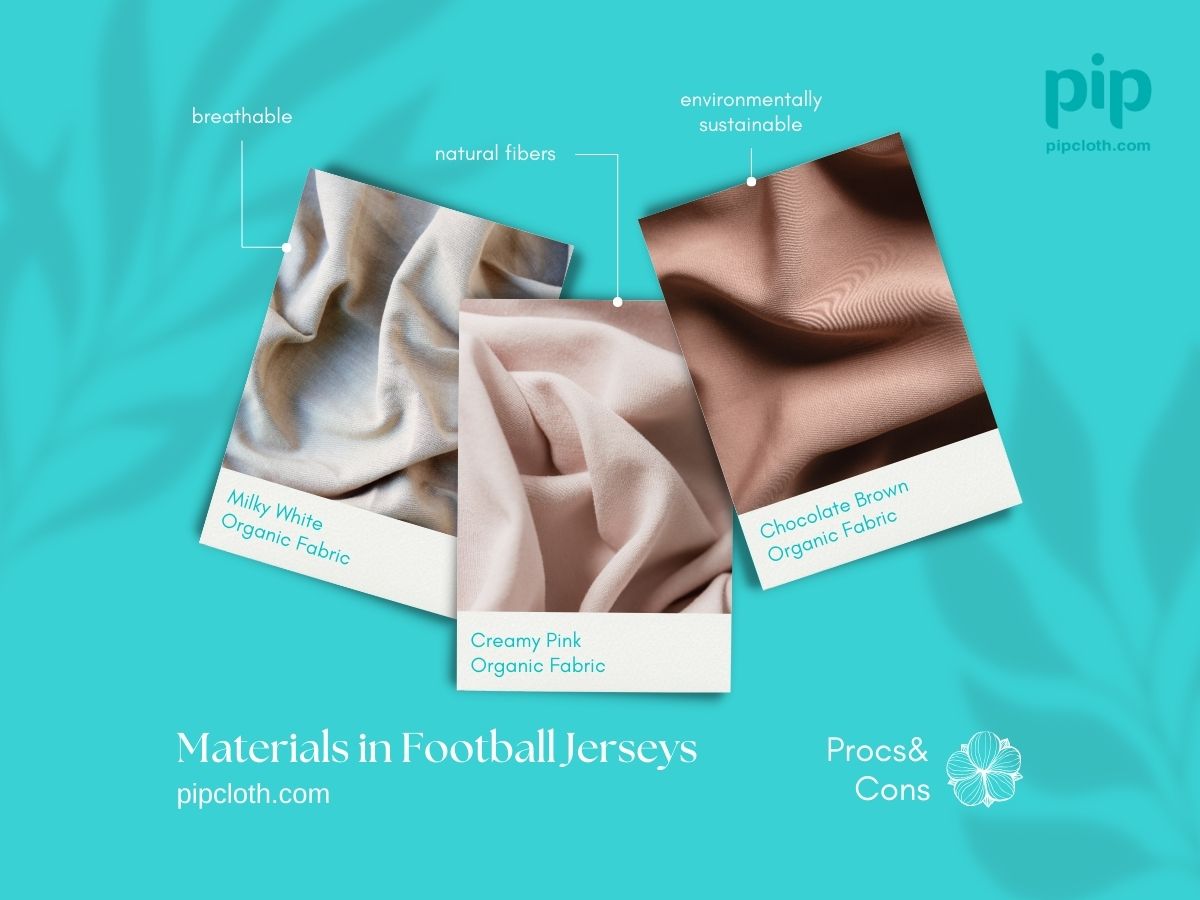Dress Green, Play Hard: Exploring Sustainable Options for Football Jerseys
The Environmental Impact of Football Jerseys
Football jerseys, like many other clothing items, can have a significant environmental impact throughout their lifecycle. From the production of raw materials to the disposal of old jerseys, each stage contributes to carbon emissions, water consumption, and waste generation . As consumers become more environmentally conscious, there is a growing demand for sustainable alternatives in the sports apparel industry .
Sustainable Materials for Football Jerseys
Manufacturers are now exploring sustainable materials to create eco-friendly football jerseys. Recycled polyester, made from post-consumer plastic bottles, is one of the most popular options. This material reduces the need for virgin polyester production, which relies on non-renewable resources and emits harmful greenhouse gases . Organic cotton, grown without the use of synthetic pesticides and fertilizers, is another sustainable alternative that offers a soft, comfortable feel while minimizing environmental impact .
Innovative Technologies in Jersey Production
In addition to sustainable materials, innovative technologies are being developed to reduce the environmental footprint of football jersey production. Waterless dyeing techniques, such as CO2 dyeing, eliminate the need for water and reduce energy consumption in the dyeing process . 3D printing technology is also being explored to create customized jersey designs while minimizing fabric waste .
Supporting Sustainable Brands and Initiatives
As a consumer, you can support the shift towards sustainable football jerseys by choosing to purchase from brands that prioritize eco-friendly practices. Look for companies that use sustainable materials, implement environmentally friendly production methods, and have transparent supply chains . Additionally, support initiatives that promote jersey recycling or donation programs to extend the life of the garment and reduce waste
The Future of Sustainable Football Jerseys
As sustainability becomes an increasingly important factor in consumer decisions, the demand for eco-friendly football jerseys is expected to grow. Manufacturers will likely continue to invest in sustainable materials, innovative technologies, and circular economy principles to create jerseys that are both high-performing and environmentally responsible . By supporting these efforts, football fans can contribute to a greener future while still enjoying the game they love.
In conclusion, sustainable football jerseys offer a promising solution to the environmental challenges posed by traditional sports apparel. By embracing eco-friendly materials, innovative production methods, and responsible consumer choices, we can work towards a future where football fans can dress green and play hard, knowing that their jerseys are not only stylish but also environmentally conscious.
Introduction
As the world becomes increasingly aware of the urgent need to address climate change and protect our environment, the sports industry is not exempt from scrutiny. Football, being one of the most popular sports globally, has a significant impact on the environment, particularly through the production and disposal of jerseys. A staggering 64% of the world’s population considers themselves football fans, according to a report by Nielsen Sports, highlighting the immense potential for change in this area. In this article, we’ll delve into the environmental impact of traditional football jersey production and explore the innovative sustainable materials, production methods, and brands paving the way for a greener future in sports apparel.
The Environmental Impact of Traditional Jersey Production
The fashion industry, including sports apparel, is responsible for a significant portion of global pollution and waste. The production of a single football jersey can require up to 3,000 liters of water, as reported by the World Resources Institute. Moreover, the use of synthetic materials like polyester, which is derived from non-renewable fossil fuels, contributes to the release of microfibers into our oceans. A study published in the journal Environmental Science & Technology found that a single wash of a polyester garment can release up to 1,900 microfibers, polluting marine ecosystems and entering the food chain.
| Material | Water Consumption | Microfiber Release per Wash |
| Polyester | N/A | Up to 1,900 fibers |
| Cotton | 3,000 L/jersey | N/A |
Furthermore, the fast fashion mentality that has permeated the sports apparel industry leads to overproduction and waste. According to the Ellen MacArthur Foundation, the equivalent of one garbage truck of textiles is landfilled or incinerated every second. This linear “take-make-dispose” model not only depletes natural resources but also contributes to the accumulation of non-biodegradable waste in landfills and oceans.
Sustainable Jersey Materials: A Closer Look
To combat the environmental challenges posed by traditional jersey production, innovative brands are turning to sustainable materials. One promising option is recycled polyester, which is made from post-consumer plastic waste, such as PET bottles. Adidas, in partnership with Parley for the Oceans, has been using recycled ocean plastic to create high-performance football jerseys. In 2019, the company produced 11 million pairs of shoes containing recycled ocean plastic, demonstrating the scalability of this approach.
Organic cotton is another eco-friendly alternative to conventional cotton, which is often grown using harmful pesticides and fertilizers. According to the Textile Exchange, organic cotton production uses 62% less energy and 88% less water compared to conventional cotton. Brands like Nike and Puma have been incorporating organic cotton into their football jersey collections, reducing their environmental footprint while maintaining quality and performance.
| Material | Environmental Benefits |
| Recycled Polyester | Diverts plastic waste from landfills and oceans |
| Organic Cotton | Uses 62% less energy and 88% less water than conventional cotton |
Innovative materials like bamboo and Tencel lyocell are also gaining traction in the sustainable sports apparel market. Bamboo is a fast-growing, renewable resource that requires minimal water and pesticides to grow. It also possesses natural moisture-wicking and antibacterial properties, making it ideal for athletic wear. Tencel lyocell, derived from sustainably sourced wood pulp, is produced using a closed-loop process that recycles water and solvents, minimizing waste and pollution. A life cycle assessment by Lenzing AG found that Tencel production uses 95% less water and generates 50% less CO2 emissions compared to conventional cotton.

Innovations in Eco-Friendly Production Methods
Sustainable football jersey production goes beyond the choice of materials; it also encompasses eco-friendly manufacturing processes. Waterless dyeing technologies, such as Nike’s ColorDry, use 90% less water compared to traditional dyeing methods. This innovative process uses supercritical carbon dioxide to infuse dyes into the fabric, eliminating the need for water and reducing energy consumption.
Digital printing is another game-changer in sustainable jersey production. Unlike traditional screen printing, which requires large amounts of water and generates waste, digital printing uses precise amounts of ink, resulting in less water consumption and reduced waste. Adidas has been using digital printing technology in its Primeknit jerseys, enabling the creation of intricate designs while minimizing environmental impact.
| Production Method | Environmental Benefits |
| Waterless Dyeing | Uses 90% less water than traditional dyeing |
| Digital Printing | Reduces water consumption and waste |
Brands are also investing in renewable energy and energy-efficient technologies to power their manufacturing facilities. Nike’s European Logistics Campus in Belgium is powered by 100% renewable energy, including wind, solar, geothermal, and biomass. The company has also set a target to reduce its carbon footprint by 30% by 2030. Similarly, Adidas has committed to using 100% renewable energy in its own operations by 2025, reducing its greenhouse gas emissions and contributing to the fight against climate change.
The high-quality materials, reinforced construction, and fade-resistant graphics ensure that Mbappe 09 Real Madrid Soccer Jersey will withstand the test of time, remaining a cherished part of your Real Madrid collection for years to come.
Leading Brands in Sustainable Football Jerseys
Several well-known brands in the sports apparel industry are leading the charge in sustainable football jersey production. Nike’s Move to Zero initiative aims to achieve zero carbon and zero waste in its operations. The company’s Flyknit technology, which uses precision engineering to create lightweight, form-fitting jerseys, reduces waste by 60% compared to traditional cut-and-sew methods. In 2020, Nike introduced the VaporKnit jersey, made with 75% recycled polyester and designed for optimal performance and sustainability.
Adidas’ partnership with Parley for the Oceans has resulted in the creation of football jerseys made from recycled ocean plastic. In 2020, the company produced 15 million pairs of shoes containing recycled ocean plastic, and it aims to use only recycled polyester in all its products by 2024. Adidas’ Primeblue and Primegreen technologies incorporate recycled materials into high-performance jerseys, reducing the brand’s reliance on virgin plastics.
Puma’s Forever Better sustainability strategy focuses on reducing waste, using more sustainable materials, and promoting circularity. The company has been using recycled polyester and organic cotton in its football jerseys, and it has also experimented with innovative materials like hemp and bamboo. In 2020, Puma launched the RE:JERSEY project, which collected and recycled 75,000 football jerseys to create new products, demonstrating the potential for closed-loop recycling in the sports apparel industry.
| Brand | Sustainable Initiatives | Impact |
| Nike | Move to Zero, Flyknit technology, VaporKnit jersey | 60% waste reduction, 75% recycled polyester |
| Adidas | Parley for the Oceans, Primeblue, Primegreen | 15 million pairs of shoes with recycled ocean plastic |
| Puma | Forever Better strategy, RE:JERSEY project | 75,000 football jerseys recycled |

The Role of Consumers in Driving Sustainable Change
As consumers become more environmentally conscious, they are increasingly demanding sustainable options from their favorite sports brands. A study by Nielsen found that 73% of global consumers are willing to change their consumption habits to reduce their environmental impact. This growing awareness presents an opportunity for football fans to drive change in the sports apparel industry.
By supporting brands that prioritize sustainability and making conscious purchasing decisions, consumers can send a clear message that eco-friendly practices matter. Opting for jerseys made from recycled materials, organic cotton, or other sustainable alternatives can help reduce the environmental footprint of the sport. Additionally, proper care and maintenance of jerseys, such as washing in cold water and air-drying, can extend their lifespan and minimize the need for frequent replacements.
Consumers can also advocate for transparency and accountability in the sports apparel industry. Demanding information on material sourcing, production methods, and labor practices can pressure brands to adopt more sustainable and ethical practices. Social media campaigns, petitions, and direct communication with brands can help amplify the voice of environmentally conscious fans and drive positive change.
Challenges and Opportunities in Sustainable Jersey Adoption
While sustainable football jerseys offer numerous benefits, there are challenges to be addressed in their widespread adoption. One key concern is ensuring that eco-friendly materials meet the performance requirements of elite athletes. Brands must invest in research and development to create sustainable jerseys that provide the same level of comfort, durability, and functionality as traditional ones. Collaborations with players and rigorous testing can help ensure that sustainable jerseys meet the demands of the game.
Scaling up production and improving affordability are also critical challenges. As sustainable materials and technologies become more widely adopted, economies of scale can help reduce costs and make eco-friendly jerseys more accessible to a wider range of consumers. Brands can also explore innovative business models, such as jersey rental or subscription services, to promote circularity and reduce waste.
| Challenge | Opportunity |
| Performance | R&D investment, player collaboration, rigorous testing |
| Scalability | Economies of scale, innovative business models |
| Affordability | Cost reduction through scale, rental/subscription services |
Education and awareness-raising are crucial for driving the adoption of sustainable football jerseys. Brands, sports organizations, and environmental advocates must work together to inform consumers about the environmental impact of traditional jersey production and the benefits of sustainable alternatives. Campaigns, educational resources, and partnerships with influencers can help spread the message and encourage fans to make more eco-friendly choices.

The Future of Sustainable Football Apparel
As technology advances and sustainability becomes a top priority for the sports industry, the future of football apparel looks increasingly green. Innovations in materials science, such as the development of bio-based and biodegradable fibers, could revolutionize the way jerseys are produced and disposed of. For example, Adidas has been experimenting with Biosteel, a biodegradable fiber made from 100% natural resources, which could potentially replace synthetic materials in the future.
The adoption of circular design principles and closed-loop recycling systems will also play a crucial role in the future of sustainable football jerseys. By designing jerseys with end-of-life considerations in mind, such as ease of disassembly and material separation, brands can facilitate more efficient recycling processes. Establishing take-back programs and partnerships with recycling facilities can help ensure that old jerseys are properly recycled and repurposed, reducing waste and conserving resources.
Collaboration and knowledge-sharing among brands, suppliers, and environmental experts will be essential for driving systemic change in the sports apparel industry. Initiatives like the Fashion Industry Charter for Climate Action, which brings together leading brands, suppliers, and organizations to address climate change, can help accelerate the transition to a more sustainable future. By working together and sharing best practices, the industry can develop innovative solutions and create a level playing field for sustainable practices.
Conclusion
The adoption of sustainable football jerseys represents a significant opportunity for the sports industry to reduce its environmental impact and contribute to the fight against climate change. By embracing eco-friendly materials, production methods, and circular business models, brands can create high-performance jerseys that not only meet the needs of players and fans but also protect the planet.
As consumers, football fans have the power to drive change through their purchasing decisions, advocacy, and support for sustainable initiatives. By choosing sustainable jerseys, promoting transparency, and encouraging brands to adopt eco-friendly practices, fans can help shape a greener future for the sport they love.
The transition to sustainable football apparel is not without its challenges, but the benefits are clear. From reducing water consumption and carbon emissions to promoting circularity and waste reduction, the adoption of sustainable jerseys can have a profound impact on the environment and the communities that depend on it.
As we look to the future, it is clear that sustainability must become a top priority for the sports industry. By working together and embracing innovation, we can create a world where football fans can proudly wear their jerseys, knowing that they are not only supporting their favorite teams but also contributing to a more sustainable and just planet. The time to act is now, and the power to make a difference lies in our hands. Let us dress green, play hard, and lead the way towards a brighter, cleaner future for all.
FAQ Section:
Q1: What is the carbon footprint of a traditional football jersey?
According to a study by the Massachusetts Institute of Technology (MIT), the carbon footprint of a single football jersey made from virgin polyester is approximately 5.5 kg CO2e. This takes into account the entire lifecycle of the jersey, from raw material extraction to manufacturing, transportation, and disposal.
Q2: How can football clubs and organizations promote sustainable jersey adoption?
Football clubs and organizations can promote sustainable jersey adoption by:
- Partnering with eco-friendly brands and suppliers
- Educating fans about the environmental impact of traditional jerseys
- Offering incentives for fans to choose sustainable options, such as discounts or loyalty points
- Implementing jersey recycling programs at stadiums and club facilities
- Setting sustainability targets and reporting on progress regularly
Q3: What is the role of government regulations in driving sustainable practices in the sports apparel industry?
Governments can play a crucial role in driving sustainable practices by:
- Implementing regulations and standards for eco-friendly production and waste management
- Offering tax incentives and subsidies for brands that adopt sustainable practices
- Funding research and development of innovative sustainable materials and technologies
- Promoting public awareness campaigns about the environmental impact of the fashion industry
- Collaborating with international organizations to establish global sustainability goals and guidelines
Q4: How can the use of sustainable football jerseys contribute to the United Nations’ Sustainable Development Goals (SDGs)?
The adoption of sustainable football jerseys can contribute to several UN SDGs, including:
- SDG 6: Clean Water and Sanitation – by reducing water pollution from textile production and dyeing processes
- SDG 12: Responsible Consumption and Production – by promoting sustainable materials, circular business models, and waste reduction
- SDG 13: Climate Action – by reducing greenhouse gas emissions and carbon footprint associated with jersey production and disposal
- SDG 14: Life Below Water – by minimizing microfiber pollution in oceans and protecting marine ecosystems
Q5: What are the potential economic benefits of transitioning to sustainable football jerseys?
The transition to sustainable football jerseys can offer several economic benefits, such as:
- Creating new jobs in sustainable material production, recycling, and circular economy sectors
- Reducing costs associated with waste management and environmental cleanup
- Attracting environmentally conscious consumers and increasing brand loyalty
- Mitigating supply chain risks associated with resource scarcity and price volatility
- Fostering innovation and competitiveness in the sports apparel industry
Q6: How can blockchain technology be used to improve transparency and traceability in sustainable jersey supply chains?
Blockchain technology can improve transparency and traceability in sustainable jersey supply chains by:
- Creating immutable records of material sourcing, production processes, and transportation routes
- Enabling real-time tracking of jerseys from raw materials to finished products
- Facilitating secure data sharing among supply chain stakeholders, including brands, suppliers, and consumers
- Ensuring the authenticity and provenance of sustainable materials and certifications
- Streamlining auditing and compliance processes, reducing costs and increasing efficiency
Q7: What are the challenges in recycling and disposing of football jerseys at the end of their life?
The challenges in recycling and disposing of football jerseys include:
- Difficulty in separating different materials, such as polyester and elastane, which are often blended together
- Lack of infrastructure and technology for efficient textile recycling and sorting
- Contamination of jerseys with sweat, dirt, and other substances that can affect recycling processes
- Limited market demand for recycled textile fibers and products
- Inadequate consumer awareness and participation in jersey recycling program
Q8: How can the sports industry collaborate with the fashion industry to accelerate sustainable practices?
The sports and fashion industries can collaborate to accelerate sustainable practices by:
- Sharing knowledge, best practices, and innovative solutions for eco-friendly production and design
- Developing joint research and development projects for sustainable materials and technologies
- Establishing industry-wide standards and certifications for sustainable apparel production
- Engaging in cross-sector partnerships and initiatives to address systemic challenges, such as waste management and circular economy
- Leveraging their combined influence to raise consumer awareness and drive policy changes
Q9: What are the potential health benefits of using sustainable materials in football jerseys?
The potential health benefits of using sustainable materials in football jerseys include:
- Reduced exposure to harmful chemicals, such as pesticides and synthetic dyes, which can cause skin irritation and allergic reactions
- Improved breathability and moisture management, leading to enhanced comfort and performance
- Decreased risk of microfiber inhalation and ingestion, which can have adverse health effects
- Promotion of a healthier environment and reduced air, water, and soil pollution, benefiting overall public health
- Contribution to mental well-being and satisfaction by aligning personal values with sustainable choices
Q10: How can gamification and rewards programs encourage fans to adopt sustainable football jerseys?
Gamification and rewards programs can encourage fans to adopt sustainable football jerseys by:
- Offering points, badges, or virtual currencies for purchasing sustainable jerseys or participating in recycling programs
- Creating leaderboards and competitions among fans to promote eco-friendly behaviors and choices
- Providing exclusive experiences, such as meet-and-greets with players or behind-the-scenes access, for fans who demonstrate a commitment to sustainability
- Partnering with environmental organizations to offer joint rewards and incentives for sustainable jersey adoption
- Integrating sustainability challenges and quests into existing fan engagement platforms and mobile apps





